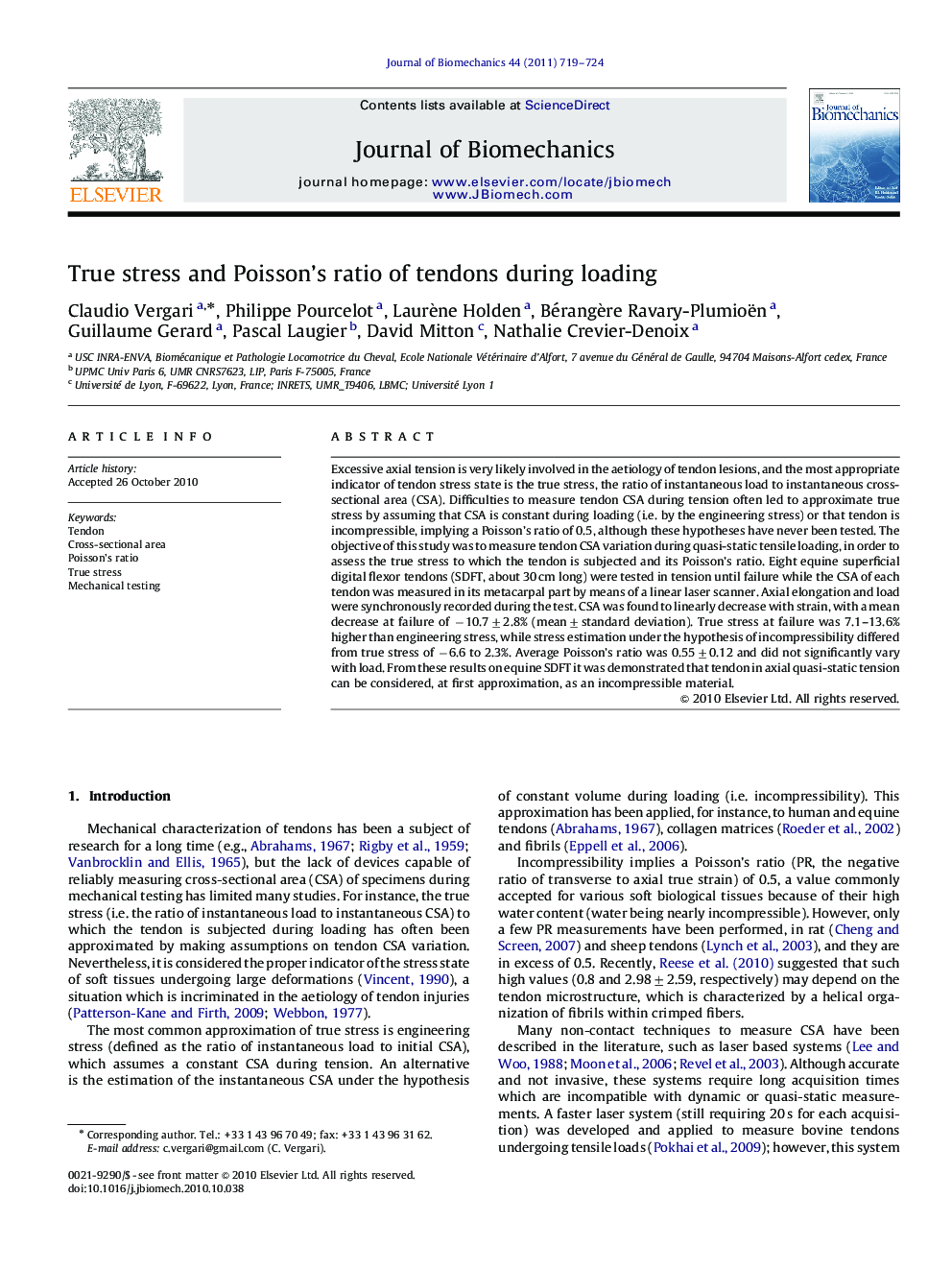| Article ID | Journal | Published Year | Pages | File Type |
|---|---|---|---|---|
| 10433282 | Journal of Biomechanics | 2011 | 6 Pages |
Abstract
Excessive axial tension is very likely involved in the aetiology of tendon lesions, and the most appropriate indicator of tendon stress state is the true stress, the ratio of instantaneous load to instantaneous cross-sectional area (CSA). Difficulties to measure tendon CSA during tension often led to approximate true stress by assuming that CSA is constant during loading (i.e. by the engineering stress) or that tendon is incompressible, implying a Poisson's ratio of 0.5, although these hypotheses have never been tested. The objective of this study was to measure tendon CSA variation during quasi-static tensile loading, in order to assess the true stress to which the tendon is subjected and its Poisson's ratio. Eight equine superficial digital flexor tendons (SDFT, about 30 cm long) were tested in tension until failure while the CSA of each tendon was measured in its metacarpal part by means of a linear laser scanner. Axial elongation and load were synchronously recorded during the test. CSA was found to linearly decrease with strain, with a mean decrease at failure of â10.7±2.8% (mean±standard deviation). True stress at failure was 7.1-13.6% higher than engineering stress, while stress estimation under the hypothesis of incompressibility differed from true stress of â6.6 to 2.3%. Average Poisson's ratio was 0.55±0.12 and did not significantly vary with load. From these results on equine SDFT it was demonstrated that tendon in axial quasi-static tension can be considered, at first approximation, as an incompressible material.
Related Topics
Physical Sciences and Engineering
Engineering
Biomedical Engineering
Authors
Claudio Vergari, Philippe Pourcelot, Laurène Holden, Bérangère Ravary-Plumioën, Guillaume Gerard, Pascal Laugier, David Mitton, Nathalie Crevier-Denoix,
